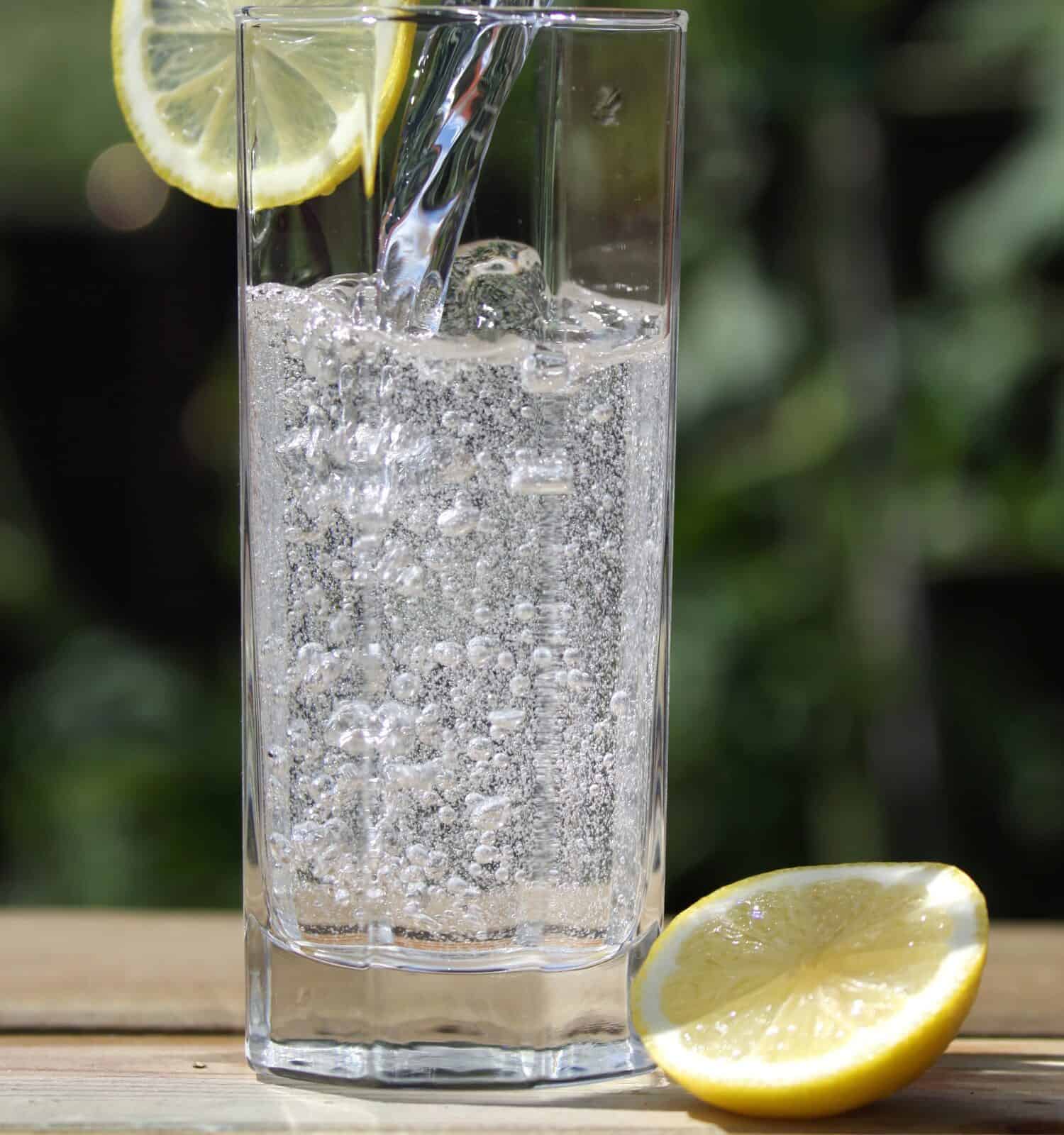Both club soda and seltzer water are carbonated. But what really sets them apart? And does it really matter? Yes – for many reasons! Whether you seek a healthier lifestyle, the right mix for cocktails, or want to satisfy your curiosity, you’ve come to the right place! This article examines key differences you need to know between club soda vs. seltzer water. Ready to dive in? First, let’s break down what each of these carbonated beverages are.
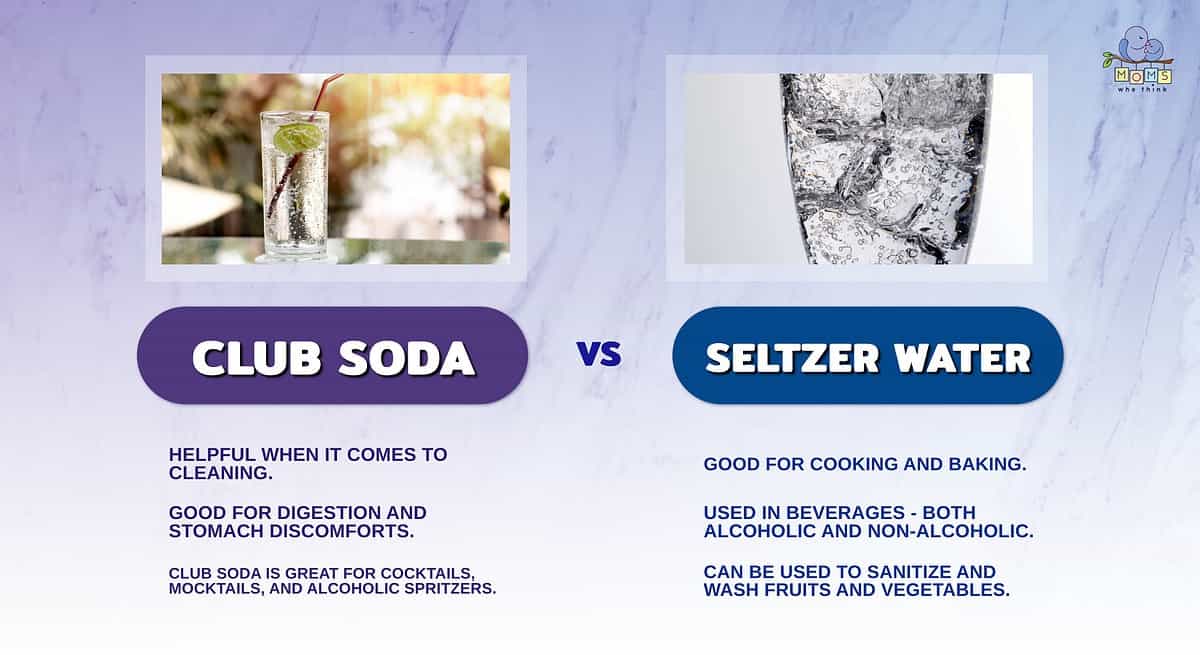
What is Club Soda?
Imagine water infused with carbon dioxide gas (CO2). What does it do? Well, when CO2 dissolves under pressure in water, it creates a bubbly or fizzy characteristic to it. That’s when carbonation happens.
It’s like sparking water but with extra pizzazz! More is involved. Minerals and salts are added to enhance the flavor and mimic the taste of natural mineral water. For example, sodium bicarbonate, commonly known in household kitchens as baking soda, it’s added to club soda to balance the pH levels.
Balancing pH levels not only directly affects the overall taste but also the safety and quality of the club soda. The pH level shows how acidic or alkaline the beverage is. In other words, you don’t want to have the taste to be too sour or weird. More like a nice and refreshing drink. Plus, if pH levels aren’t balanced, club soda can wreak havoc on your digestive system or teeth. Also, they prevent germs from growing in the drink, so it can stay fresh longer!
Then there’s sodium citrate, disodium phosphate, and potassium sulfate that adds to the mineral flavor and helps regulate the acidic levels of club soda. It’s a drink that truly mimics the taste of natural mineral water but with a touch of fizz and pizazz! But if you’re not a lover of mineral water, you may not be a fan of club soda.
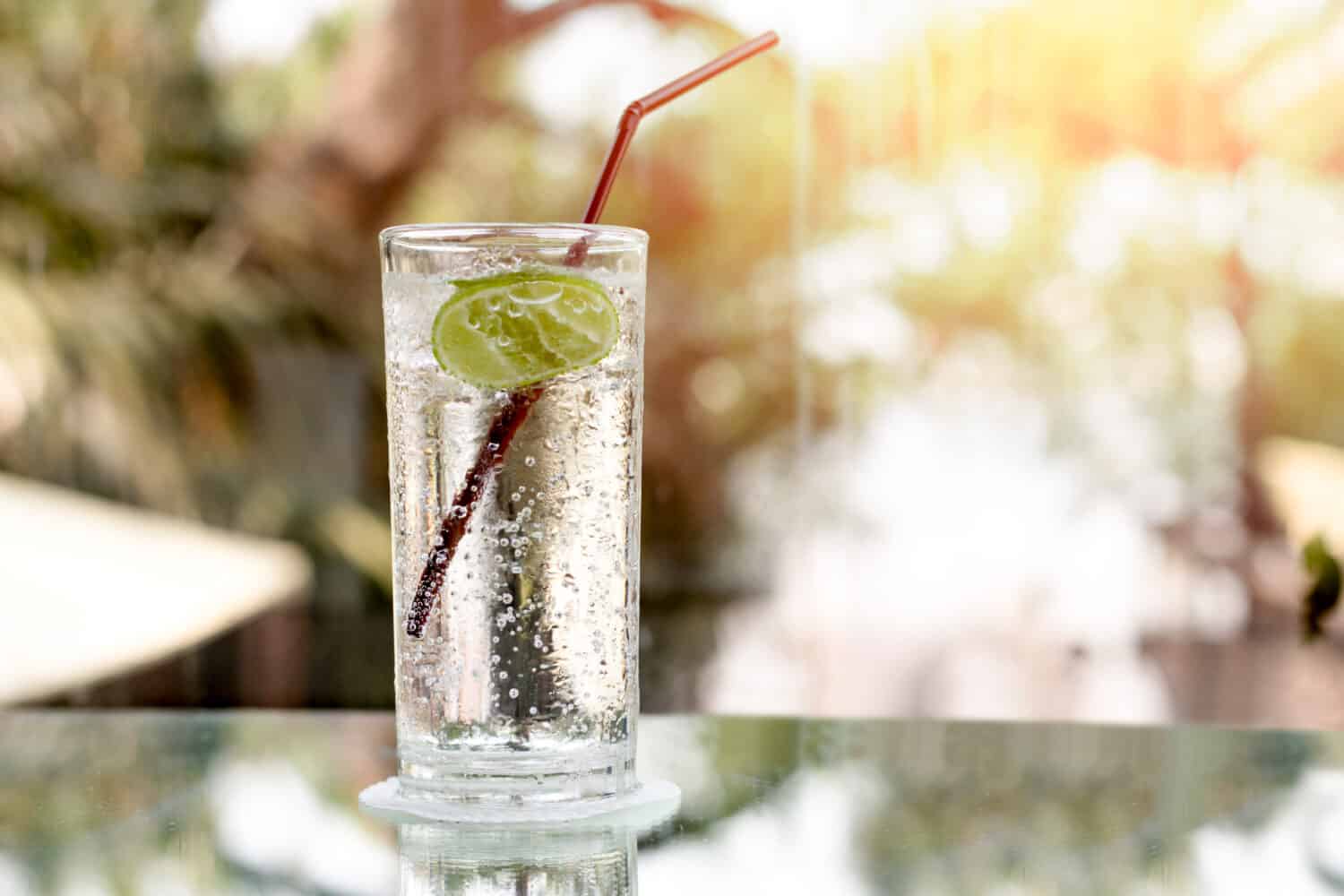
©Bignai/Shutterstock.com
Uses for Club Soda
Mocktails are non-alcoholic drinks that are primarily made up of club soda. It gives the right amount of carbonation to create fizziness without the alcohol. Then there’s the flavored water made by mixing club soda with fruit juices, syrups, or muddled fruit. This creates a refreshing, lightly flavored sparkling water. You can even add club soda to herbal teas to create a hydrating and effervescent drink with a twist!
Club soda is a key component in cocktail mixers, which typically consist of spirits such as whisky, vodka, or gin. These spirits are mixed with a large amount of club soda. Combining this non-alcoholic mixer club soda creates classic drinks such as Gin and Tonic or Rum and Coke. Then there’s the popular Mojito cocktail. This is club soda mixed with mint, lime juice, sugar, and rum.
Another common mix of club soda is with wine or vermouth to create light and refreshing spritzer drinks. These are a great alternative if you want to watch the level of alcohol and calories as they are much lower when you compare them with traditional wine-based beverages.
Print
Strawberry Basil Mocktail
- Yield: 1 mocktail 1x
Ingredients
- 3–4 slices of fresh strawberries
- 4–5 leaves of a fresh basil
- 2oz strawberry fruit syrup
- 4oz sparkling water or club soda
Instructions
- Place fruit, herbs, and fruit syrup in a tall highball glass.
- Muddle everything together.
- Add ice to fill the glass.
- Top with sparkling water or club soda.
- Stir, sip and enjoy!
Additional Perk to Using Club Soda
Some people find the carbonation and minerals in club soda to be a welcome, soothing relief to help with digestion and stomach discomforts.
Most soda fountains use club soda as a base for creating classic flavors by adding flavored syrups! Club soda is a carbonated drink that can enhance flavors… add fizziness… dilute strong ingredients… and create a balanced and refreshing drink for you in a wide variety of cocktails and non-alcoholic beverages. With its added minerals and salts, it creates a slightly salty or mineral-like taste.
Seltzer water is like water that has turned into a fun, bubbly adventure – but without the added flavors such as minerals and salts found in club soda. It's also carbonated water. And because of its clean and neutral taste, it is a more popular choice for mixing with other beverages.
Uses for Seltzer Water
Similar to club soda, seltzer water is incredibly versatile and common in beverages from cocktails to mocktails! In fact, in the previous beverage examples, you can swap club soda for seltzer water as a fantastic base for creating delicious and refreshing beverages!
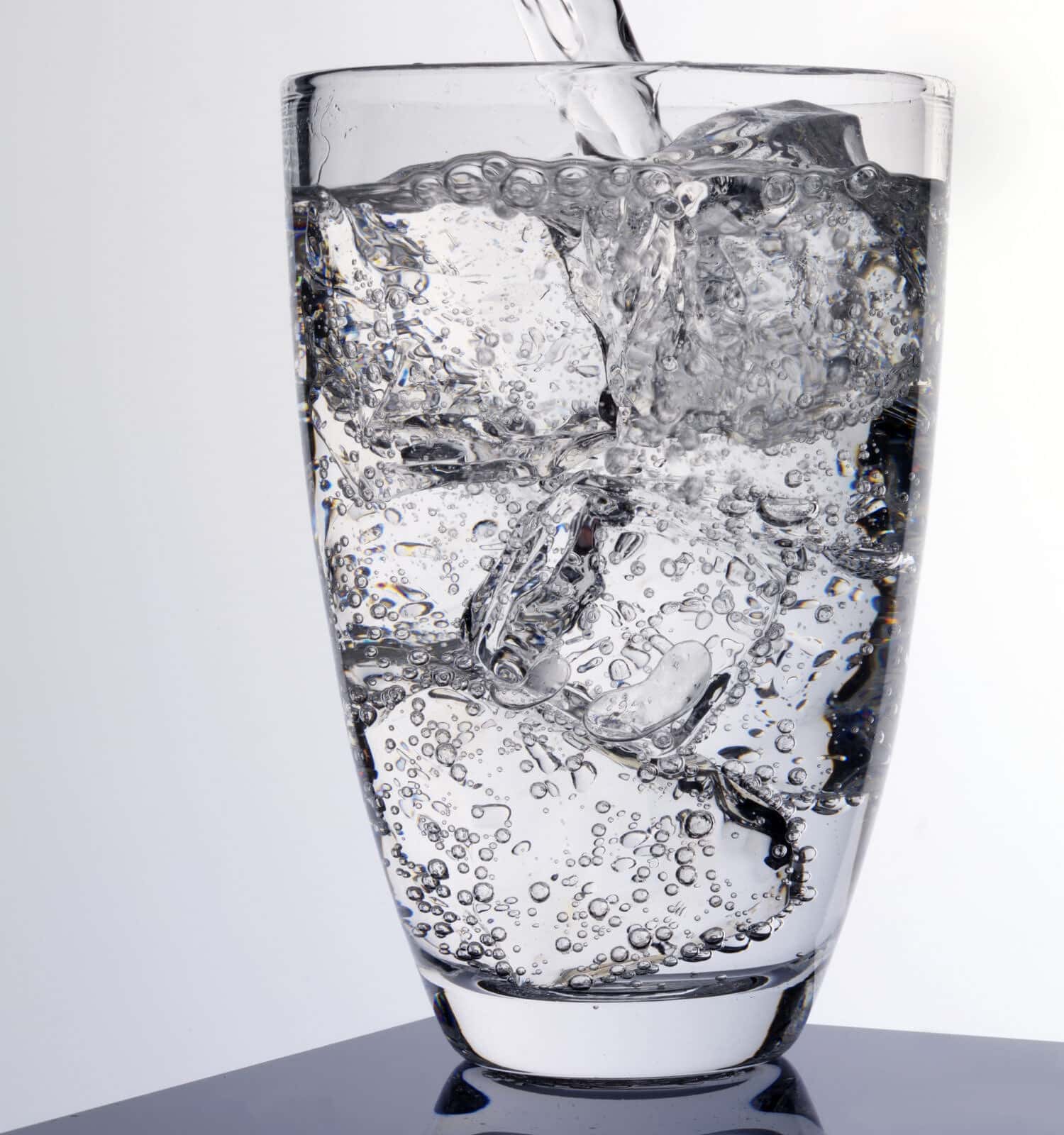
©CKP1001/Shutterstock.com
But here’s where seltzer water really takes things to the next level!
Because of its neutral flavor, it does wonders in the kitchen! For example…
Cooking and Baking
Seltzer water adds a light and airy texture to dishes. Try it in batter for pancakes, waffles, and baked goods like biscuits and muffins. The possibilities are endless!
Sauces and Marinades
If you need to create a lighter, more fluffier texture for your sauces, try adding a little bit of seltzer water. Some marinade recipes benefit from adding seltzer water to their recipes too!
Club Soda vs. Seltzer Water: Which Cleans Better?
When it comes to cleaning, both can get the job done! It really boils down to the type of stain or dirt you’re dealing with. The minerals and salts from the club soda can help break down and loosen dirt and stains slightly more than seltzer water. But it’s the carbonated water from either of the two that can help agitate and lift particles, making them easier to clean.
For example, the Istanbul Gelisim University reported using carbonated water to wash your fruits and vegetables is one of the most effective methods of removing pesticides from them. So, the next time you bring home produce from the grocery store, why not give this method a try!
You can use to pre-treat stains on fabric, upholstery, and carpeting. Blot the stain with a cloth soaked in club soda or seltzer water to help lift the stain before it sets. For cleaning surfaces like glass, mirrors, and countertops, the carbonation can help break down grime and grease.
It is not uncommon to hear of people using club soda or seltzer water to clean jewelry, especially items with gemstones. Why? It’s because of the gentle bubbling action that helps loosen dirt and debris from small crevices.
Try club soda or seltzer water to water your houseplants from time to time. For example, the minerals in club soda may provide some nutrients to the plants.
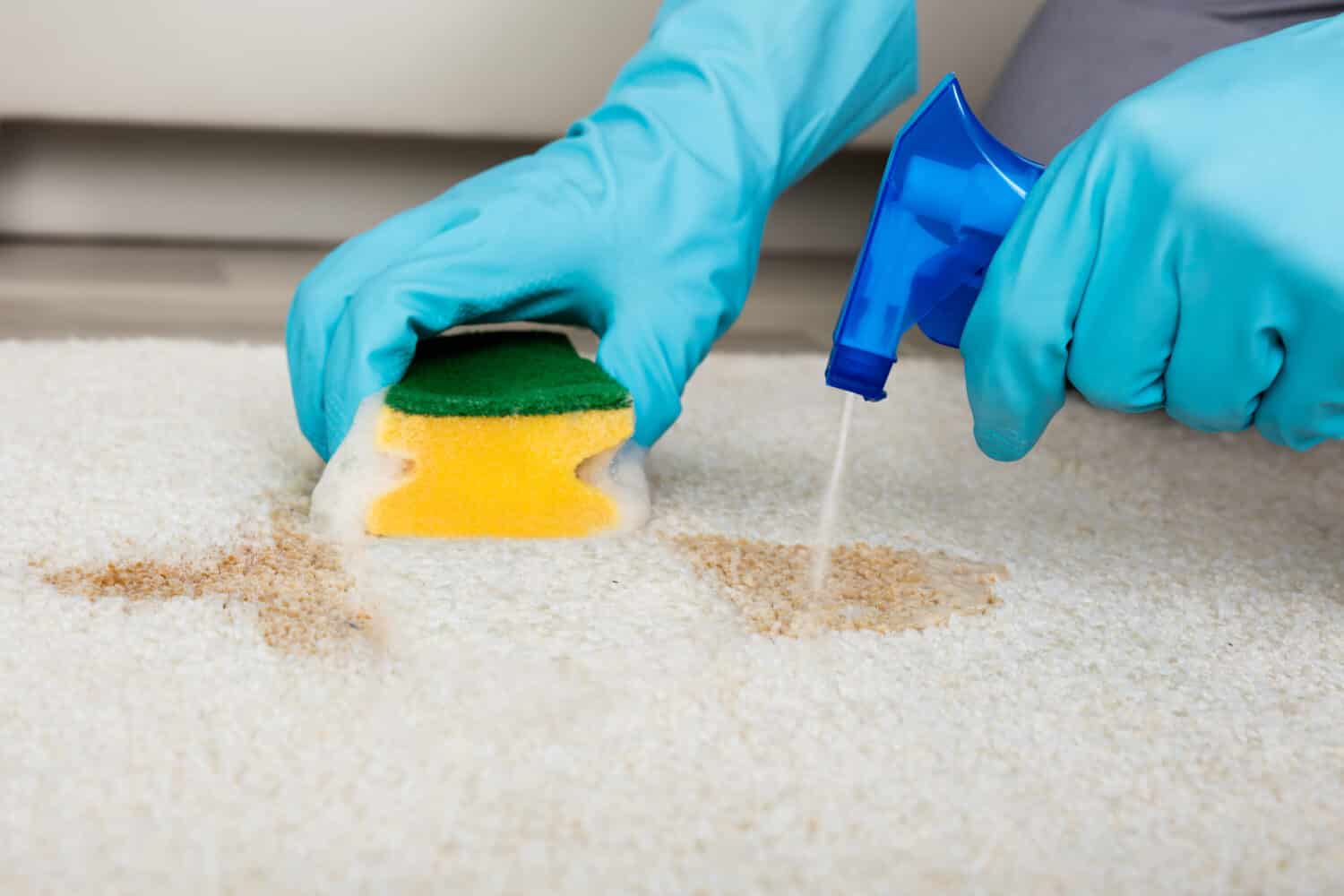
©Andrey_Popov/Shutterstock.com
While both club soda and seltzer water can be used for cleaning, their effectiveness can vary based on the specific cleaning task. So, if you’ve got a tough stain, try club soda with its added minerals to provide more cleaning power. But in general, either option can be a useful household cleaning tool for cleaning and stain removal!
Club Soda vs. Seltzer Water: Which is Healthier?
Both club soda and seltzer water are calorie-free and have no added sugars or artificial sweeteners. So if you’re looking for healthier alternatives to stay hydrated while avoiding the sugary drinks on the market, the choice boils down to personal preference and any specific dietary considerations you may have. But watch out for versions in the grocery store with added artificial ingredients. Choose what fits your health goals.
Final Thoughts
Club soda and seltzer water are fizzy drinks with their own special features. Club soda has added minerals for an extra taste that mimics natural mineral water. Because of this, it can enhance the flavors of beverages from mocktails to cocktails. And it adds an extra boost to cleaning too by making it easier to loosen dirt and stains!
On the other hand, seltzer water’s purity provides a more neutral base for creative and refreshingly fizzy beverages – both alcoholic and non-alcoholic. Think of it like bubbly water that's great for making fun drinks, trying new flavors, and helping keep things in your household clean too! So all in all, when it comes to club soda vs. seltzer water, both are like magic bubbles that can add fun to your drinks and help with cleaning too! Which will you choose?
The image featured at the top of this post is ©Bjoern Wylezich/Shutterstock.com.
